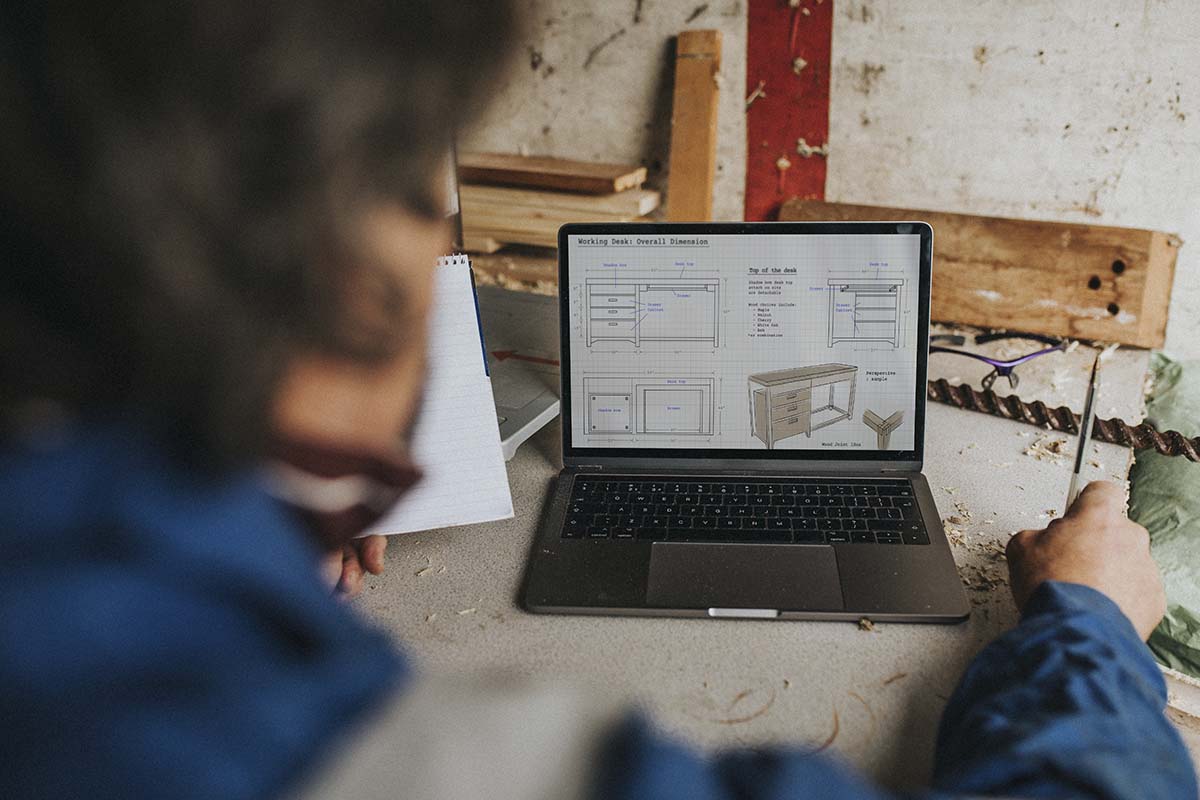Architectural hardware plays a vital role in both the aesthetics and functionality of a building. From the doorknobs and hinges that enable movement within a structure to the pulls and handles that add style and character, your choices regarding materials and finishes can significantly impact your space’s overall look and feel. In this guide, we will explore the diverse world of architectural hardware, focusing on the materials and finishes available and how they can influence the design and performance of your building.
The Significance of Architectural Hardware
Architectural hardware is the unsung hero of any building. These small but essential components are responsible for more than just keeping doors locked or cabinets secure. They are crucial in providing a seamless and functional experience while contributing to the overall aesthetic appeal of the space. Architectural hardware can enhance the design, add character, and provide a harmonious blend between form and function when properly chosen.
Materials Matter
Choosing the optimal materials for architectural hardware constitutes a decision of paramount importance. It is a choice that wields substantial influence over the hardware’s durability, aesthetic attributes, and overall functionality within the broader context. Let us, therefore, embark on an exploration of architectural hardware materials, focusing on some of the most commonly employed options.
Brass
Brass, a perennial favorite among architectural hardware enthusiasts, exudes a timeless charm. It brings a classic, warm, and welcoming touch that harmonizes seamlessly with a diverse spectrum of interior design styles, ranging from the traditional to the contemporary. One of brass’s standout attributes lies in its exceptional resistance to corrosion, rendering it a robust choice for both indoor and outdoor applications. Over the passage of time, brass undergoes a natural transformation, developing an enchanting patina that imparts character and allure to the hardware.
Stainless Steel
Stainless steel has become a go-to choice for modern architectural hardware enthusiasts. People love it for its sleek and contemporary look, durability, and its knack for resisting corrosion. Stainless steel is particularly well-suited for bustling areas and outdoor settings, thanks to its robustness and ability to brave the elements. Plus, it offers a wide range of finishes, from polished to satin, opening up plenty of creative design avenues.
Zinc
Zinc steps in as a budget-friendly alternative to pricier materials like brass or stainless steel. It’s a versatile option, finding its place in various hardware components, from handles to knobs. Although it doesn’t quite match the durability of brass or stainless steel, zinc hardware can serve as a sensible choice for areas with lighter traffic.
Bronze
Bronze stands out for its luxurious and elegant appearance, known for its warm and earthy color palette. What makes bronze truly exceptional is the unique patina it naturally develops over time. When employed in architectural hardware, bronze has the remarkable ability to bestow an aura of timeless sophistication upon a space. It’s no wonder it’s a sought-after choice for high-end architectural projects.
Aluminum
Although light in weight, aluminum boasts impressive durability, which is why it’s a popular choice for both door and window hardware. It shines with its remarkable corrosion resistance and ability to be effortlessly crafted into various designs. The sleek, modern aesthetic of aluminum positions it as an excellent fit, particularly for contemporary architectural designs.
Copper
Copper hardware exudes a warm and rustic charm. Like brass, it develops a natural patina over time, which can enhance its visual appeal. Copper hardware is commonly used for interior and exterior applications, especially in homes seeking a rustic or vintage aesthetic.
Glass
Glass hardware elements, like cabinet knobs and handles, bring a distinctive and elegant flair to any area. People often gravitate towards them because of their see-through quality and their knack for effortlessly harmonizing with different interior design themes.
Finishes for Style and Protection
While the choice of material lays the foundation for your architectural hardware, finishes provide the final touch, affecting both aesthetics and protection. There are various finish options to consider, each with its unique qualities:
Polished
Opting for a polished finish grants you a shiny, reflective surface that exudes a sleek and modern aesthetic often linked with contemporary design styles. Polished hardware can capture attention and infuse your space with a touch of opulence.
Satin
Going for a satin finish gives you a more understated, matte look. It’s a favored option for those aiming to balance modernity and subtlety in their design. Satin finishes often find their home in busy spaces where the worry of fingerprints and smudges looms, as they tend to be less conspicuous on a matte surface.
Antique
Antique finishes are crafted to emulate the weathered look of vintage hardware. They’re a fantastic choice for infusing character and a touch of old-world charm into your space, evoking a sense of history and nostalgia. These finishes shine brightest in settings that embrace rustic and traditional design themes.
Brushed
Brushed finishes offer a textural quality akin to lightly brushed metal, with faint, parallel lines gracing the surface. This finish brings a subtle note of elegance and pairs seamlessly with a variety of design styles, whether you’re leaning towards modern or embracing a classic aesthetic.
Oil-Rubbed
Oil-rubbed finishes are celebrated for their deep, dark hues and a weathered appearance that imparts a rustic and aged essence to architectural hardware. People tend to favor them for their capacity to cultivate a cozy and welcoming ambiance in a space.
Black
Black finishes have surged in popularity recently, particularly in modern and industrial design. Black hardware adds a bold and striking contrast to lighter-colored doors and cabinets, creating a strong visual impact.
Considerations for Specific Hardware Components
Various architectural hardware components come with their distinct set of needs and factors to ponder regarding the choice of materials and finishes:
Door Hardware
When selecting hardware for doors, consider factors such as security, durability, and aesthetics. Brass or stainless steel door handles and locks are excellent choices for their strength and corrosion resistance. Finishes like satin or polished can complement various architectural styles.
Cabinet Hardware
Cabinet hardware, such as knobs and pulls, is an opportunity to add personality to your space. The choice of materials and finishes should align with your overall design theme. For example, antique finishes can work well in a vintage-inspired kitchen, while sleek stainless steel pulls may be ideal for a modern space.
Window Hardware
Window hardware should be chosen with an emphasis on functionality and durability. Since it’s often exposed to the elements, materials like stainless steel or aluminum are recommended for their weather-resistant properties. Select finishes that complement your exterior design, such as matte black for a contemporary look or antique finishes for a historic home.
Maintenance and Care
Ensuring the proper upkeep of architectural hardware is crucial to retaining its look and performance. Let’s delve into some maintenance pointers, taking into account the materials and finishes involved:
- Brass and bronze hardware can be polished to maintain their luster or left to develop a natural patina, depending on your preference.
- To keep stainless steel and aluminum hardware looking sharp, use a gentle detergent and water mix to wipe away any pesky fingerprints and smudges.
- Be mindful when dealing with antique and oil-rubbed finishes to avoid scratching, which might expose the base metal. It’s advisable to perform regular dusting and employ a gentle cleaning approach to maintain their integrity.
Conclusion
Architectural hardware, often overlooked, plays a pivotal role in the world of interior and exterior design. Your choices regarding materials and finishes wield significant influence over your space’s visual appeal and usability.
When it comes to deciding on architectural hardware, it’s vital to consider the unique demands of each element, your overall design scheme, and how much maintenance you’re willing to commit to. By thoughtfully handpicking the right materials and finishes, you can strike a perfect balance between form and function, elevating the overall charm of your building. So, don’t rush the process; take your time, explore the possibilities, and design your space with architectural hardware that genuinely mirrors your style and requirements.





















